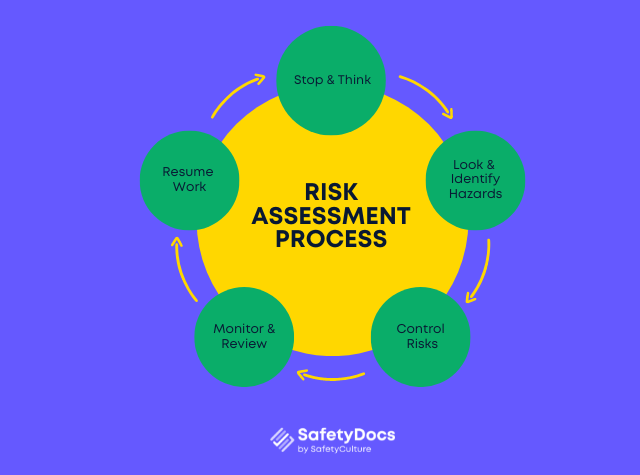Work-related stress is a significant problem in today's workplace. While many factors can contribute to work-related stress, psychosocial hazards are the most common.
Psychosocial hazards are those that relate to the psychological and social environment of the workplace. Examples of psychosocial risks include job insecurity, long hours, work-family conflict, and lack of control over one's work. Each of these can lead to increased stress levels and have a cumulative effect. In other words, the more psychosocial hazards an individual is exposed to, the greater their risk of developing work-related stress.
Employers need to be aware of these risks and take steps to minimise them. This may involve providing employees with more support, clarifying job expectations, and increasing opportunities for employee input. By taking these steps, employers can help to reduce the level of work-related stress in their organisations.
Physical and psychological health
Workplace health and safety (WHS) is a broad term that encompasses both physical and psychological health. The responsibility for ensuring WHS extends beyond simply providing for work-related injuries and illnesses and extends to workers' mental and emotional health. While many organisations have traditionally focused on the physical aspects of WHS, there is an increasingly recognised need to address psychological health.
Psychosocial hazard is the name most often applied to those dangers which may affect mental health. In terms of health and safety, health includes both psychological and physical harm. During a risk management process, a psychosocial hazard should be considered equally important to physical hazards, i.e. hand-holding chemicals and electric power.
Common causes of psychosocial hazards
There are many potential causes of psychological hazards in the workplace. One common source of stress is job insecurity, which can lead to anxiety and depression. This can be caused by factors such as an uncertain job market, downsizing, or restructuring within a company.
Another common cause of psychological hazards is work-related social isolation. This can occur when workers are not given adequate opportunity to socialise with their colleagues or feel that their coworkers do not understand or support them.
This can lead to feelings of loneliness, frustration, and burnout. Also, dealing with difficult customers or aggressive clients can be a source of psychological stress. In some cases, this can even lead to post-traumatic stress disorder.
Thankfully, there are many ways to prevent or mitigate these hazards, such as by providing support and resources for struggling employees. By understanding the causes of psychological risks in the workplace, companies can take steps to create a healthier and safer environment for their employees.
Employer responsibilities
WHS Regulations require employers to protect workers from risks to their health and safety that arise from their work. This includes psychosocial hazards such as stress, bullying and fatigue. Employers must take reasonably practicable steps to identify and eliminate or minimise psychosocial hazards in the workplace. If this is not possible, they must provide workers with information about the risks and how they are being controlled.
Workers also have a responsibility to take care of their own health and safety and to follow WHS procedures. By working together, employers and workers can create a safe and healthy workplace for all.
Employers are responsible for protecting workers from psychological harm by managing psychosocial risks. Depending on where they work, some psychosocial problems will always remain, and others may only occur occasionally. The employer must know the risks and the methods they use to manage them.
Eliminating psychosocial hazards
There are a number of control measures that can be implemented to reduce psychosocial risks at work. Some of the most effective include:
1. Providing training and support for employees:
Employees should be trained to identify and deal with psychosocial risks at work. They should also be given regular opportunities to raise concerns and receive support from management.
2. Developing policies and procedures:
Organisations should develop policies and procedures to address psychosocial risks at work. These should be designed to promote a healthy and safe working environment.
3. Conducting risk assessments:
Regular risk assessments should be conducted to identify potential sources of psychosocial risks at work. This will help to ensure that appropriate control measures are in place.

4. Promoting communication and consultation:
Effective communication and consultation between employees and management is essential to reducing psychosocial risks at work. This can help identify potential problems early and ensure that everyone knows the measures in place to address them.
5. Encouraging employee involvement:
Employee involvement is key to reducing psychosocial risks at work. Employees should be encouraged to participate in decisions about their working environment and conditions.
6. Monitoring and review:
Organisations should monitor the effectiveness of their control measures on a regular basis. This will help to identify any areas where improvements could be made.
7. Providing support for employees:
Employees who are exposed to high levels of stress or who have suffered a traumatic event should be provided with support from management. This may include access to counselling or other forms of assistance.
8. Implementing workplace redesign:
The physical layout of the workplace can have a significant impact on employee well-being. Where possible, workplaces should be designed to reduce the risk of exposure to psychosocial risks.
9. Addressing job insecurity:
Job insecurity is a major source of stress for many workers. Employers should address this issue by providing training and development opportunities, offering job security guarantees, or introducing family-friendly policies.
10. Encouraging healthy lifestyle choices:
Healthy lifestyle choices can help employees to cope with stress and reduce the risk of developing mental health problems. Organisations should encourage employees to adopt healthy habits such as exercise, healthy eating, and getting enough sleep to avoid mental or physical exhaustion.
Conclusion
While many factors can contribute to work-related stress, psychosocial hazards are a particularly important cause. By definition, psychosocial hazards are risks to mental and emotional well-being that arise from the environment or relationships within the workplace. Examples of common psychosocial hazards include unrealistic job demands, lack of control over work tasks, and social isolation. When left unchecked, these hazards can lead to high stress, anxiety, and depression levels. In severe cases, they can even lead to burnout.
That's why it's so important for organisations to have excellent policies and support mechanisms in place to protect workers from psychosocial hazards. By providing employees with a safe and supportive work environment, organisations can help to reduce the risk of work-related stress and promote healthy psychological development.
Author - Craig Cruickshank is the HSEQ Manager and Senior Technical Advisor at SafetyDocs by SafetyCulture.
Craig comes from a construction and environmental background, with experience in both the private and public sectors and is passionate about making health and safety information easy to find and understand for everyone.
Learn more about Craig's work on LinkedIn
Available for instant download and supplied in fully editable MS Word format for use in your business.
Please note that the above information is provided as a comment only and should not be relied on as professional, legal or financial advice.
Share This Article
